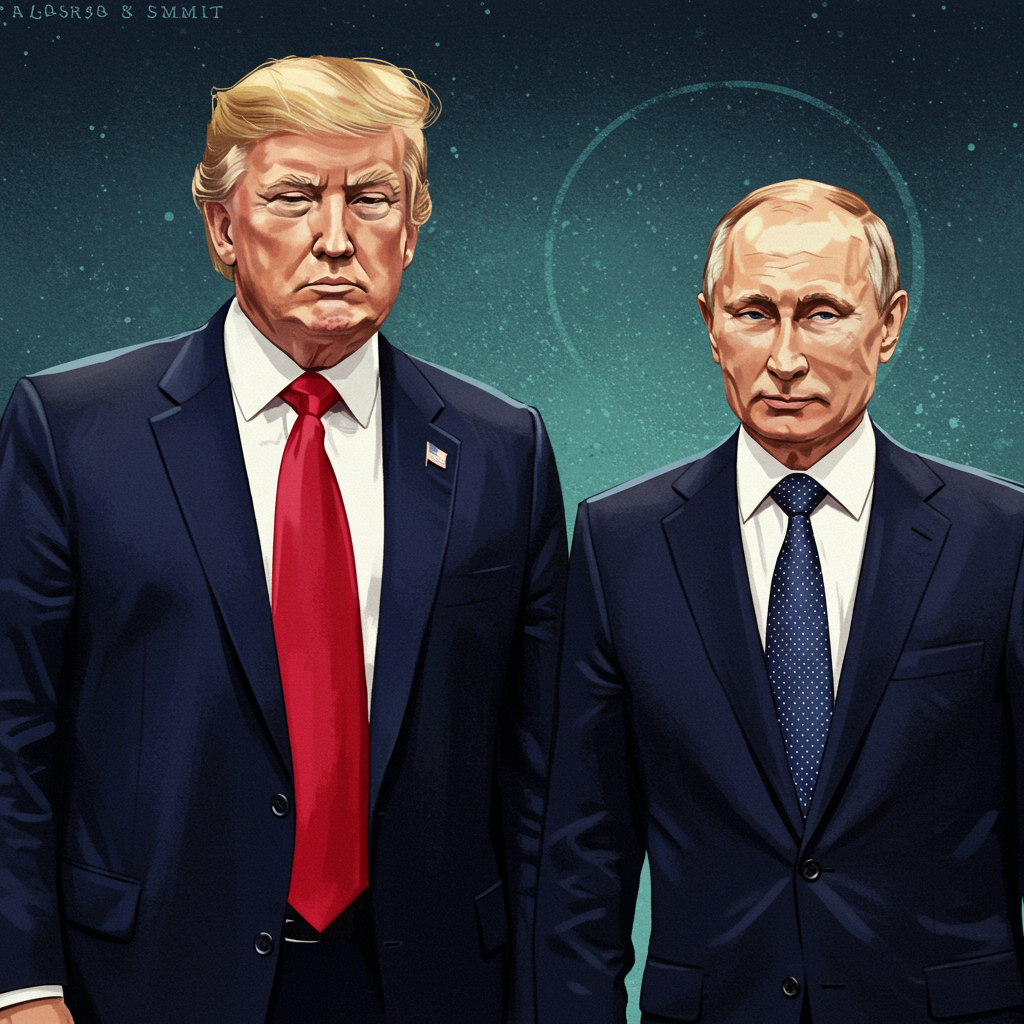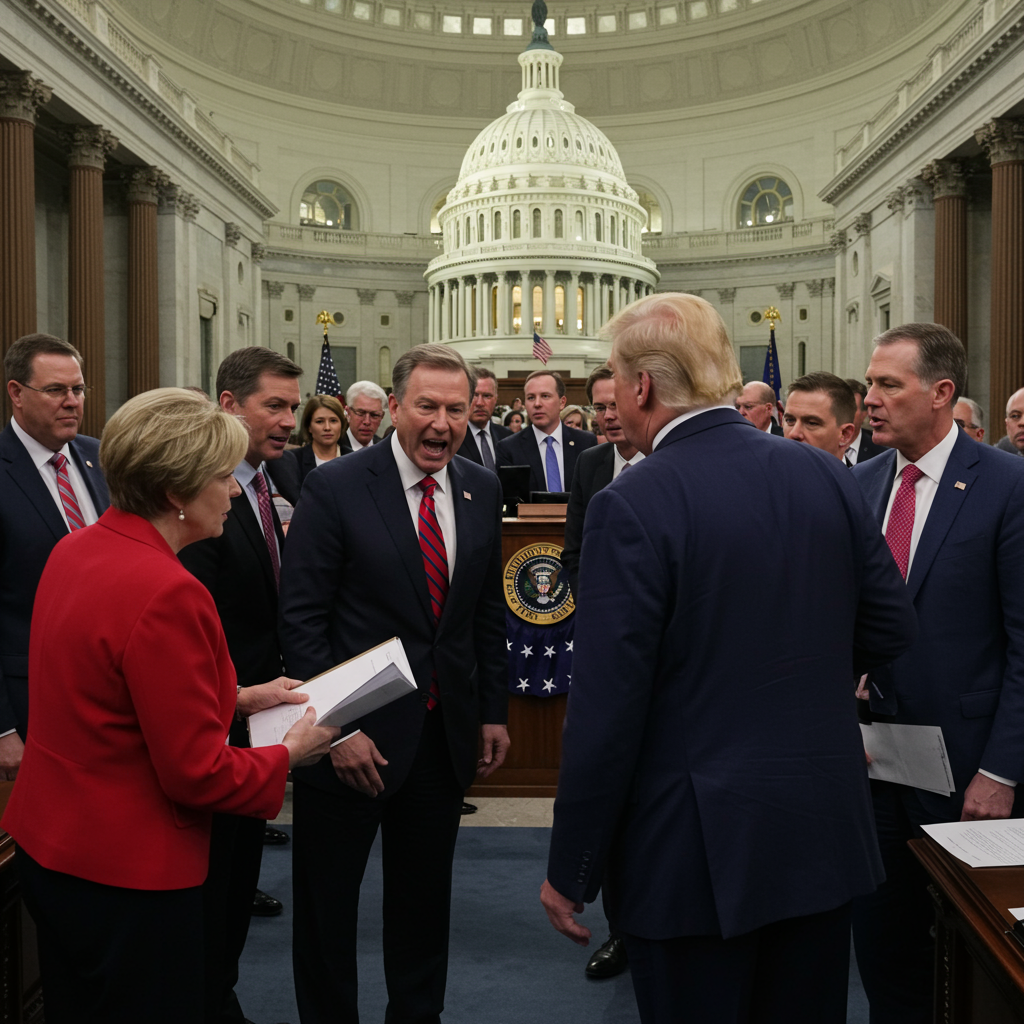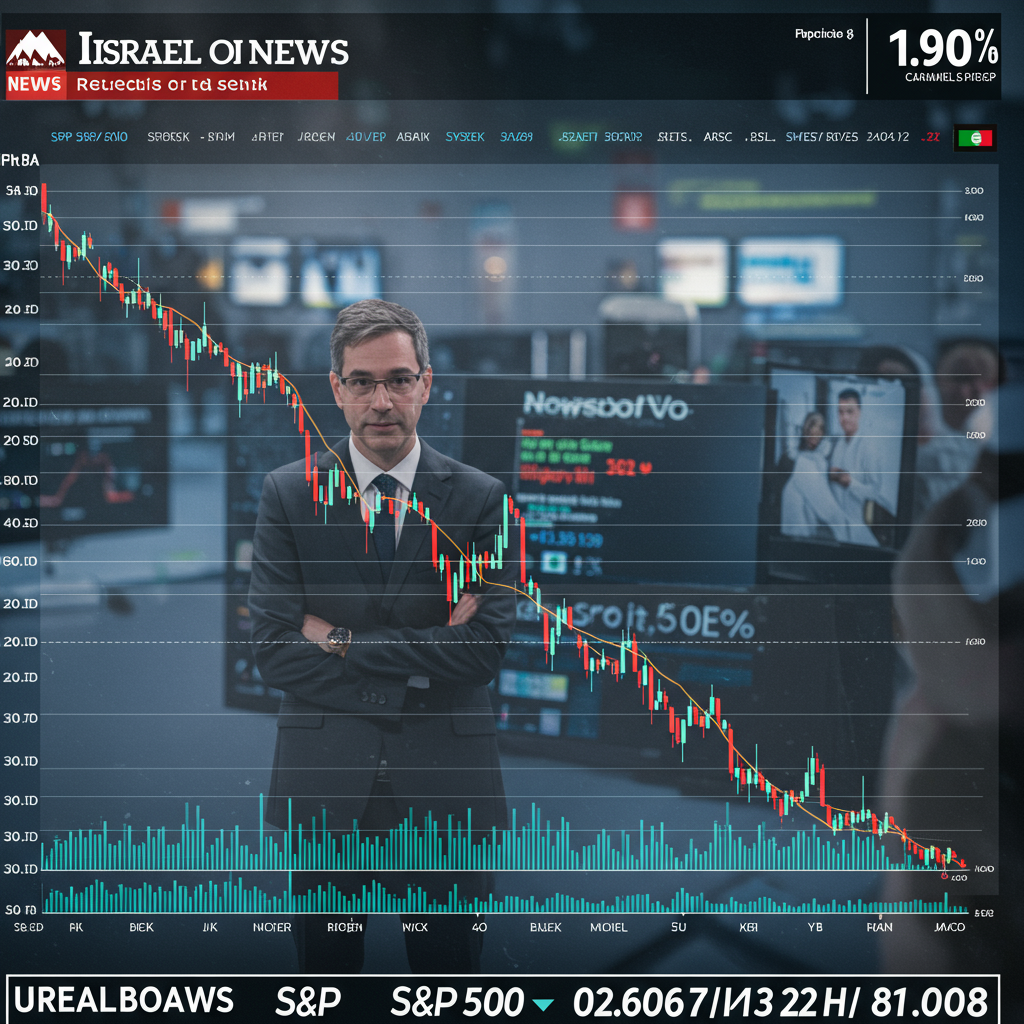The highly anticipated August 2025 Alaska Summit between US President Donald Trump and Russian President Vladimir Putin captured global attention, yet its immediate aftermath revealed a deeply polarized assessment. While President Trump hailed the meeting as a resounding success, many international observers and, crucially, Ukraine itself, viewed the encounter as a significant diplomatic triumph for Russia. This outcome has left profound questions looming over the future of international relations and the arduous path to peace in Ukraine.
The High Stakes Before Alaska: A Diplomatic Tightrope Walk
Leading up to the Joint Base Elmendorf-Richardson meeting in Anchorage, anticipation ran high. For months, President Trump had positioned himself as the ultimate dealmaker, expressing confidence in his ability to broker a lasting peace in the protracted conflict. His administration’s foreign policy efforts had reportedly centered on achieving a swift ceasefire and a comprehensive peace deal in Ukraine.
However, the prelude to the Alaska Summit was complex. Just months prior, in March 2025, a crucial call between Trump and Putin had seen Putin conditionally support a mutual pause on attacks against energy infrastructure. Yet, a broader 30-day truce, which Ukraine had already accepted, failed to materialize from that discussion. Despite these initial hurdles, U.S. Special Envoy Steve Witkoff remained optimistic, stating that groundwork was being laid for a full ceasefire. Conversely, President Trump had also repeatedly threatened “large scale Banking Sanctions, Sanctions, and Tariffs on Russia” if peace talks failed, even setting an August 8 deadline that passed without punitive action. This strategic dance, characterized by warnings of “sticks” for Russia that never materialized and “carrots” in the form of potential normalization and sanctions relief, set an unusual tone for the upcoming face-to-face meeting.
A Summit of Symbols: Dueling Displays and Unilateral Gains
When President Trump and Russian President Putin finally met on August 15, 2025, the visuals were striking. The summit began with a dramatic display of US air power, as F-35 jets and a B-2 bomber roared overhead, signaling American superpower. However, Putin immediately countered this symbolism, greeting Trump with the unexpected, familiar phrase, “Good afternoon, dear neighbor.” This seemingly innocuous remark subtly leveraged Alaska’s geographic proximity to imply immediate mutual interests that transcended the distant European conflict.
From the outset, what was billed as a high-stakes negotiation quickly transformed into a public relations victory for the Russian leader. Trump’s elaborate stage production of Putin’s arrival, complete with near-simultaneous presidential jet exits and red-carpet strolls, effectively provided significant image rehabilitation for a leader who remained a pariah in much of the West and faced accusations of war crimes in Ukraine. Kremlin-controlled media outlets, quick to capitalize, declared the visit a “total collapse of the whole concept of isolating Russia” and a “breakthrough,” regardless of the lack of concrete agreements. This demonstrated that merely the act of meeting the U.S. President was, in itself, a profound diplomatic victory for Putin, effectively bringing him out of a years-long “diplomatic deep freeze.”
Putin’s Strategic Wins and Trump’s Notable Concessions
Despite President Trump’s post-summit claims of “a lot of progress” and a “10 out of 10” meeting, a closer analysis reveals a significant tilt in Putin’s favor.
Most notably, by the end of their encounter, President Trump had offered a massive concession regarding the pathway to peace in Ukraine. He adopted the Russian position that peace efforts should concentrate on a final, comprehensive peace deal—a process likely to span months or even years of negotiations—rather than an immediate ceasefire to halt the ongoing Russian offensive. As commentators pointed out, this effectively bought Russia more time to continue its military operations and further grind down Ukraine. This move directly contradicted Trump’s own pre-summit metric of achieving a ceasefire, signaling a shift in approach that analysts viewed as highly beneficial to Moscow.
Furthermore, President Trump, at least for the time being, backed away from his previously vocal threats to impose tough new sanctions on Russia. He had warned of expanding secondary sanctions on nations purchasing Russian oil, measures intended to cripple Russia’s war funding. This leverage, which may have been a key factor in bringing Putin to the Alaska Summit, appeared to be relaxed with little in return. Trump’s post-summit comments, suggesting he wouldn’t “have to think about that now,” underscored this perceived relaxation of pressure. Experts like Oleg Ignatov of the International Crisis Group had previously noted that Trump’s strategy seemed to apply a “carrot” to Russia while wielding a “stick” against Ukraine, raising questions about his genuine interest in securing concessions from Moscow.
The strategic manipulation by the Russian leader also extended to personal validation. Putin reportedly praised Trump’s second term, remarking that the US was “as hot as a pistol” after having previously considered it “dead.” He publicly reinforced Trump’s talking point that the 2022 invasion “would never have happened” if Trump had been president, a claim Trump openly welcomed. This transparent flattery, combined with Trump’s credulity in accepting such testimony from a “totalitarian strongman” (even on unrelated topics like mail-in voting, despite US intelligence assessments of Russian election interference), worried Ukraine and its allies.
The Ukrainian Perspective: Disappointment and Daily Brutality
For Ukrainians and their European allies, who were notably excluded from the Trump-Putin meeting and briefed only afterward, the immediate aftermath of the Alaska Summit was met with profound disappointment and cynicism. Ukrainian President Volodymyr Zelenskyy, who was not invited, described Putin’s trip to the U.S. as his “personal victory.” Many Ukrainians expressed feeling “gobsmacked” and saw the meeting as “useless” precisely because their country was not represented. As one theatre manager from Kharkiv stated, “issues concerning Ukraine should be resolved with Ukraine, with the participation of Ukrainians, the president.”
The summit concluded without any tangible deal, and unusually, without President Trump taking questions from reporters alongside Putin, further cementing the perception of minimal progress. The tragic reality on the ground underscored this futility: hours after the talks, Kyiv was attacked by 85 drones and a ballistic missile. Residents of Kharkiv, which continues to face almost daily shelling, emphasized that their daily struggles remained unchanged regardless of high-level diplomatic efforts. This pervasive skepticism extended to Trump’s intentions, with many Ukrainians believing he was “not for Ukraine” and appeared too friendly with Putin. Despite underlying beliefs in eventual victory, uncertainties about who would deliver it, and how, persisted amidst a deep-seated pessimism about a lasting truce given Russia’s historical patterns of aggression.
Trump’s Post-Summit Calculations: A Strategic Crossroads
Having fallen short of his own publicly stated expectations for the Alaska Summit, President Trump returned home facing a series of searing strategic questions. The underlying premise of his peacemaking efforts—that his personality and unique dealmaking abilities could unilaterally end wars—appeared significantly challenged.
Several paths lay before him:
Imposed Peace on Ukraine: One option is to revert to previous attempts to pressure Ukraine into an imposed peace deal. This approach, however, risks validating Russia’s illegal invasion and legitimizing the idea that states can unilaterally redraw international borders, thereby undermining a foundational principle of the post-World War II international order.
Renewed Sanctions Pressure on Russia: Alternatively, as the initial dust settles, President Trump could seek to repair any perceived damage to his prestige by reverting to increased US pressure and sanctions to recalibrate Russian calculations. While tariffs on Russian exports to the U.S. might be largely symbolic, experts suggest targeting banks with stakes in Russia’s oil and gas sector and penalizing its “shadow fleet” to compromise Moscow’s financial sustainability. However, analysts caution that Russia has proven resilient to sanctions, and new measures might not yield immediate results or could strain relations with key Russian customers like China and India, indicating “no magic bullet” exists.
Embracing Russia’s Long-Term Peace Vision: Another possibility is to commit fully to the Russian vision of prolonged talks on a final peace agreement. History suggests this path would be neither swift nor necessarily honored by Russia over the long term. While a three-way summit between Putin, Zelenskyy, and Trump might appeal to his craving for spectacle, Friday’s evidence suggests Russia has little immediate desire to end the war on terms favorable to Ukraine.
Disengagement or Boredom: A final, less predictable possibility is that Trump simply becomes discouraged or bored with the intricate details and prolonged drudgery of a long-term peace process that lacks the quick, decisive wins he can celebrate with his supporters. As Jim Townsend, a former defense official, noted before the summit, Trump’s focus on “style” over “substance” makes him susceptible to manipulation.
The Nobel Peace Prize: A Distant Horizon
The Alaska Summit drove a significant wedge through the White House’s assertion that President Trump is the “President of Peace.” While he genuinely deserves credit for effectively using US influence to de-escalate conflicts in other regions, such as between India and Pakistan, Rwanda and the Democratic Republic of Congo, Thailand and Cambodia, and Armenia and Azerbaijan—often leveraging the unique cudgel of US trade benefits—his high-profile failure to resolve the Ukraine war, a conflict he once pledged could be fixed in “24 hours,” marks a considerable setback.
His continued pursuit of a Nobel Peace Prize appears increasingly out of reach given the complexities of the Ukraine conflict and U.S. complicity in the humanitarian disaster in Gaza. Despite his characteristic bluster, a post-Alaska interview hint suggested a newfound, albeit painful, understanding of the conflict’s true difficulty: “I thought this would be the easiest of them all and it was the most difficult.” This admission underscores the profound challenges that persist, leaving President Trump, and indeed the world, with lingering uncertainties about the path forward.
Frequently Asked Questions
What were the primary outcomes and key takeaways from the August 2025 Trump-Putin Alaska Summit?
The Trump-Putin Alaska Summit on August 15, 2025, yielded few tangible gains for the U.S. but was widely perceived as a significant diplomatic victory for Russian President Vladimir Putin. Key outcomes included President Trump adopting Russia’s preference for a long-term peace deal over an immediate ceasefire in Ukraine, the apparent relaxation of U.S. threats of new sanctions against Russia, and a significant image rehabilitation for Putin on the global stage. Despite Trump’s claims of success, most analysts and Ukrainian officials concluded the meeting offered little concrete progress towards ending the conflict.
How did the Alaska Summit impact the international stance on sanctions against Russia and support for Ukraine?
The Alaska Summit notably saw President Trump back away from previous threats of imposing tough new sanctions on Russia. This decision was seen by many as a missed opportunity to leverage economic pressure. While the Biden administration had previously expanded sanctions and considered further measures, the summit’s outcome suggested a softening of the U.S. stance. For Ukraine, the lack of immediate sanctions and the shift towards protracted peace talks without a ceasefire were deeply concerning, leading to fears that Russia would continue its military operations unchecked while diplomatic discussions dragged on.
Why did the Ukrainian government express skepticism and disappointment regarding the Alaska Summit?
Ukrainian leaders and citizens expressed profound skepticism and disappointment regarding the Alaska Summit primarily due to their exclusion from the talks. President Zelenskyy publicly stated his view that Putin’s presence in the U.S. was a “personal victory” for the Russian leader, who had been internationally isolated. Ukrainians felt that issues concerning their nation should be resolved with their direct participation. The summit’s failure to produce an immediate ceasefire, coupled with continued Russian attacks on Ukrainian cities hours after the meeting, solidified a widespread belief among Ukrainians that the talks were “useless” and merely served to legitimize their aggressor.




